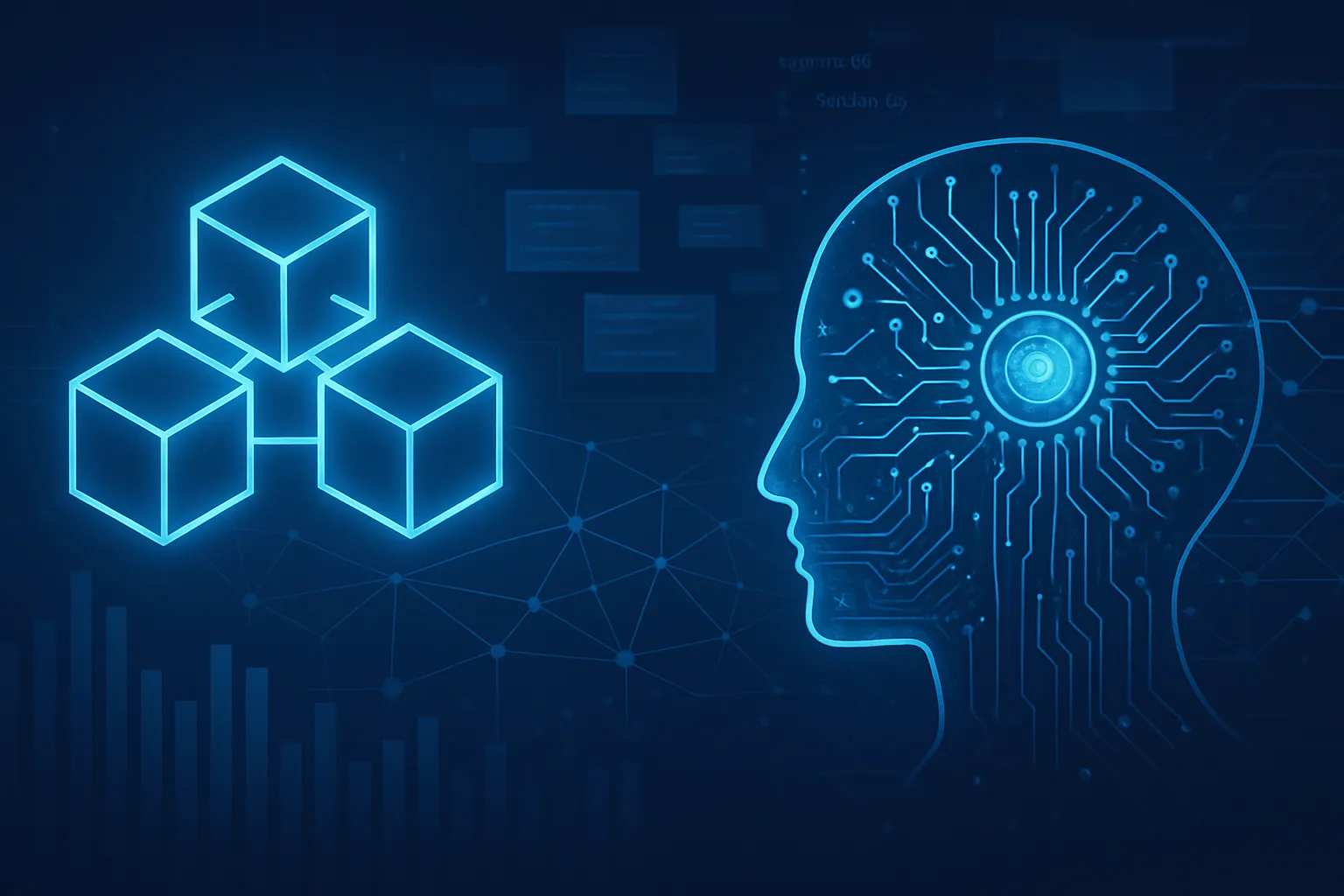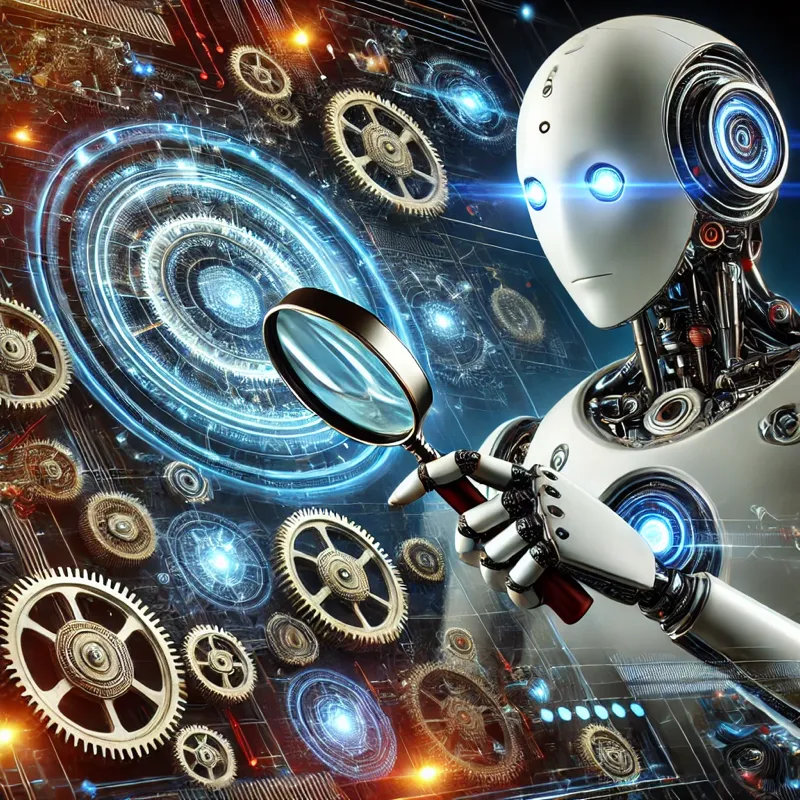Blockchain and artificial intelligence (AI) stand as two of the most transformative technologies of the 21st century, each already reshaping how organizations approach data, automation, and digital interaction. Blockchain excels in enabling trustless environments through distributed ledgers, ensuring that transactions and records are secure, transparent, and tamper-proof. Meanwhile, AI continues to revolutionize how we process information and make decisions, offering systems the ability to learn, predict, and optimize in real time. Despite operating in different realms, both technologies aim to enhance the integrity and value of data—one by ensuring its authenticity, the other by interpreting it for meaningful action.
When combined, blockchain and AI unlock a new frontier of possibilities that neither could achieve alone. Blockchain can serve as a verifiable source of truth for the vast amounts of data AI consumes, enhancing traceability, accountability, and fairness in algorithmic outcomes. In return, AI can enhance blockchain networks by optimizing consensus algorithms, automating smart contracts, and detecting anomalies in real time. Together, they create an ecosystem where trust is built into the foundation, and intelligence is woven throughout the system’s operations. This article delves into the intersection of these technologies, examining their mutual benefits and how they can jointly overcome critical industry challenges while driving innovation across finance, healthcare, logistics, governance, and beyond.
The Synergy of Blockchain and AI
Blockchain’s decentralized ledger ensures data integrity, immutability, and transparency—making it an ideal backbone for secure data storage, traceable transactions, and verifiable processes. Its tamper-resistant nature eliminates the need for centralized intermediaries, fostering trust among distributed stakeholders. Artificial intelligence (AI), on the other hand, thrives on large volumes of data to uncover patterns, generate predictions, and automate decision-making. When these technologies converge, blockchain can serve as a trusted source of high-quality, verified data for AI models, while AI can enhance the operational efficiency, scalability, and intelligence of blockchain ecosystems. This symbiotic relationship enables more reliable insights and auditable outcomes, solving critical trust gaps in today’s digital systems.
Consider the realm of supply chain management. Blockchain can chronicle each step of a product’s journey—from raw materials to end delivery—providing a transparent and immutable audit trail. This combats counterfeiting and enhances regulatory compliance. AI complements this by analyzing real-time data across the supply chain to predict demand fluctuations, optimize inventory, and dynamically reroute logistics based on current conditions. In healthcare, blockchain ensures that patient records remain confidential yet accessible to authorized parties, preserving both privacy and integrity. AI can then analyze this data to support diagnostics, forecast patient outcomes, and tailor treatment plans. Together, these technologies offer a foundation for smarter, more secure, and ethically grounded digital innovation across industries.
Challenges in Integrating Blockchain and AI
Despite the promising synergy between blockchain and artificial intelligence, integrating these two powerful technologies is far from trivial. While their convergence opens new frontiers in trust, automation, and intelligence, it also introduces a unique set of challenges that must be carefully addressed to unlock their full potential.
Scalability
One of the most immediate and pressing challenges in combining blockchain and AI lies in scalability. Most public blockchains, such as Ethereum or Bitcoin, rely on consensus mechanisms like Proof of Work (PoW) or Proof of Stake (PoS) to validate transactions and secure the network. While these methods are robust and secure, they are inherently slow, with transaction throughput often limited to a few dozen transactions per second. In contrast, AI systems typically operate on massive datasets and require real-time or near-real-time processing capabilities to deliver actionable insights.
This mismatch in processing speed creates a bottleneck when blockchain is used as the data foundation for AI systems. If AI must rely on slow blockchain transactions for input, it can significantly hinder performance, particularly in time-sensitive applications like fraud detection, autonomous systems, or smart supply chains. Solutions such as Layer-2 scaling, sidechains, and hybrid blockchain architectures are emerging to mitigate these issues, but they introduce new complexities in implementation and governance that must also be considered.
Data Privacy
Another critical tension point is data privacy. Blockchain’s foundational promise of transparency and immutability is often at odds with the need for confidentiality, especially in AI-driven applications that require access to sensitive or personally identifiable information (PII). For example, healthcare AI models rely on patient data, while financial AI applications may use personal transaction histories—all of which are protected under data privacy regulations such as GDPR, HIPAA, or CCPA.
Publishing such data directly to a public blockchain, even in hashed or pseudonymized form, risks violating these regulations due to the permanent and publicly accessible nature of blockchain entries. Additionally, the “right to be forgotten”—a core tenet of many privacy laws—is fundamentally incompatible with blockchain’s immutable architecture. Techniques such as zero-knowledge proofs, secure multiparty computation, and off-chain data handling have been proposed as solutions, but they come with trade-offs in complexity, performance, and trust assumptions.
Interoperability
As blockchain and AI ecosystems grow, interoperability becomes a major barrier to integration. AI systems often rely on data streams and computation models from diverse sources—cloud environments, IoT devices, and third-party APIs—while blockchains exist in fragmented silos, each with their own consensus models, data structures, and smart contract languages. This disparity makes it difficult to design a unified architecture where blockchain and AI can work together seamlessly.
Without standardized protocols and communication interfaces, integrating AI with multiple blockchains becomes a costly and time-consuming endeavor. Projects must either build custom connectors for each blockchain or rely on third-party middleware solutions, which may compromise performance and security. Ongoing efforts in developing cross-chain communication protocols (like Polkadot or Cosmos) and AI-focused blockchain frameworks (like Ocean Protocol or Fetch.ai) aim to bridge these gaps, but widespread adoption and maturity remain a work in progress.
Resource Intensity
Finally, both blockchain and AI are resource-intensive technologies, often requiring significant computational power, specialized hardware, and large energy inputs. Blockchain networks, particularly those using PoW, have been criticized for their high energy consumption. At the same time, AI models—especially large-scale deep learning systems—require powerful GPUs or TPUs and substantial memory and storage resources, both during training and inference.
When combined, these technologies can place a considerable burden on infrastructure, raising concerns about cost-efficiency, environmental impact, and accessibility. This resource intensity may pose barriers to adoption for small- and medium-sized enterprises or applications intended for decentralized, edge-based environments. Addressing this challenge requires a multi-pronged approach, including the adoption of green AI principles, transitioning to energy-efficient blockchain protocols, leveraging federated learning, and designing decentralized AI systems that can operate on resource-constrained nodes without sacrificing performance or security.
Proposed Framework for Convergence
To overcome the technical and operational challenges of integrating blockchain and artificial intelligence, a structured and modular framework is essential. Rather than attempting to force both technologies into a monolithic architecture, this approach advocates for separation of concerns, strategic alignment, and the incorporation of best practices from both domains. The following components form a pragmatic foundation for scalable, secure, and interoperable blockchain-AI convergence.
Layered Architecture
A layered architectural approach provides a logical separation between the blockchain layer and the AI processing layer. In this model, the blockchain is responsible for core functionalities such as identity management, access control, data provenance, and integrity validation. It acts as the trust anchor—ensuring that the data AI models consume is verified, untampered, and auditable.
Meanwhile, AI functions are decoupled into a separate layer where data is aggregated, analyzed, and acted upon. This design ensures that AI engines have the flexibility to evolve independently, using the most appropriate tools, libraries, and data sources without being constrained by the blockchain’s performance limitations. Communication between layers can be managed through APIs, oracles, and off-chain data connectors that ensure secure and verified interactions without compromising speed or efficiency.
Off-Chain Processing
Given the performance bottlenecks of blockchain, especially in public networks, it is neither feasible nor efficient to conduct computationally intensive AI operations directly on-chain. Off-chain processing emerges as a vital design principle to address this. By moving model training, inference, and complex data transformations off the blockchain, developers can leverage high-performance computing environments, cloud infrastructure, or edge nodes to perform AI tasks at scale.
The blockchain then serves as a coordination and verification layer, logging model outputs, timestamps, data hashes, and consent records as needed. This hybrid approach preserves the security and traceability benefits of blockchain while freeing AI workloads from throughput and cost constraints. Technologies such as zk-rollups, sidechains, and secure multiparty computation can be leveraged to facilitate trusted off-chain execution with verifiable on-chain commitments.
Privacy-Preserving Techniques
As data privacy becomes a growing concern across industries, it is critical to embed privacy-preserving technologies into the blockchain-AI stack. Cryptographic techniques such as zero-knowledge proofs (ZKPs) allow data verification without revealing the actual data—a powerful tool when AI models require validation against sensitive records like financial transactions or medical histories.
Differential privacy is another valuable technique, particularly for AI training. It allows aggregate insights to be extracted from datasets while ensuring that individual data points cannot be reverse-engineered. Combining these methods with permissioned blockchains or encrypted data lakes enables secure AI workflows that adhere to regulatory requirements such as GDPR, HIPAA, and emerging AI-specific laws. Ultimately, embedding privacy by design into both AI algorithms and blockchain smart contracts is no longer optional—it’s foundational.
Standardization and Interoperability
The fragmented landscape of blockchain protocols and AI development platforms poses a major barrier to integration. Without common standards for data exchange, governance, and API interfaces, cross-platform functionality remains limited and costly to implement. Establishing industry-wide interoperability frameworks is therefore a core requirement for sustainable convergence.
Standards bodies, consortiums, and open-source initiatives can play a pivotal role in driving compatibility across systems. Projects like W3C’s DID (Decentralized Identifiers) for digital identity, IEEE standards for AI ethics, and Interledger Protocol (ILP) for blockchain interoperability are promising steps forward. Organizations should participate in these efforts and adopt modular architectures that support plug-and-play components, enabling seamless integration with external models, datasets, and ledgers as needed.
Energy-Efficient Algorithms
The convergence of blockchain and AI must also consider the growing scrutiny on environmental sustainability. Both technologies can be highly energy-intensive, and their integration can exacerbate the problem if not managed responsibly. Transitioning to energy-efficient consensus mechanisms such as Proof of Stake (PoS), Proof of Authority (PoA), or Delegated Proof of Stake (DPoS) can significantly reduce blockchain’s carbon footprint.
On the AI side, innovations like model distillation, quantization, and federated learning offer pathways to build lighter, faster, and more efficient AI models. When combined, these strategies allow blockchain-AI systems to operate within realistic energy and infrastructure constraints, making them viable for deployment in edge environments, developing regions, and ESG-conscious enterprises. Sustainability should not be a secondary concern—it should be a design priority from the outset.
Future Outlook
The convergence of blockchain and artificial intelligence represents a pivotal inflection point in the evolution of digital technologies. As the demand for systems that are both autonomous and trustworthy continues to grow, this integration offers a pathway toward creating intelligent infrastructures with built-in transparency, traceability, and resilience. No longer must we choose between performance and trust—when properly orchestrated, blockchain and AI can coexist in a symbiotic architecture that enhances both.
In the near future, we are likely to witness the rise of decentralized AI applications—systems where AI models are not owned or controlled by a central authority, but instead operate across distributed networks, governed by smart contracts and consensus protocols. Such models could be trained and deployed across edge devices or federated networks, with their behavior validated through blockchain audit trails. This unlocks powerful use cases: from self-sovereign identity and predictive healthcare to autonomous marketplaces and transparent public governance.
However, realizing this vision will require more than technical innovation—it demands collaborative frameworks between academia, industry, and regulatory bodies. Research must continue to evolve in areas like secure multiparty computation, explainable AI, and post-quantum cryptography. Meanwhile, standards organizations and open-source communities must work together to develop interoperable, ethically-aligned protocols that reduce fragmentation and accelerate adoption.
Governments and enterprises alike must also take proactive steps to build policy environments that support responsible convergence. This includes creating regulatory sandboxes, funding public-private research initiatives, and crafting legislation that balances innovation with privacy, accountability, and equity.
The integration of blockchain and AI is not just a technological evolution—it is a strategic imperative for the next generation of digital systems. By combining AI’s ability to learn, predict, and adapt with blockchain’s strengths in verification, provenance, and decentralization, we stand at the threshold of systems that are not only smarter, but fundamentally more trustworthy.
This convergence offers the opportunity to reshape digital ecosystems with unprecedented levels of transparency, autonomy, and fairness—attributes that will define leadership in the coming digital era. The organizations that invest now in exploring, prototyping, and scaling these hybrid architectures will not only lead their industries—they will help shape a more equitable, intelligent, and resilient digital future for all.



